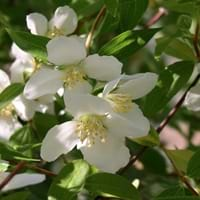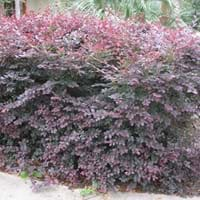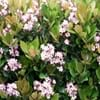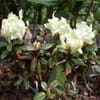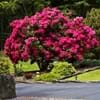Life Span
Perennial
Perennial
Type
Shrub
Broadleaf Evergreen
Origin
Mexico
China, Japan
Types
Not Available
Little Rose Dawn, Hines Purpleleaf, ‘Shang-hi
Number of Varieties
Not Available
Habitat
Wide range of ecological site
gardens, Hillside, open Woodlands, Roadsides, Rocky areas, Stream side, Woodlands
USDA Hardiness Zone
8-11
6-9
AHS Heat Zone
10-7
Not Available
Sunset Zone
6, 7, 8, 9, 14, 15, 16, 17, 18, 19, 20, 21, 22, 23, 24
21,22
Habit
Oval or Rounded
Oval or Rounded
Flower Color Modifier
Not Available
Bicolor
Fruit Color
Red, Orange
Brown
Leaf Color in Spring
Green, Light Green
Green, Bronze
Leaf Color in Summer
Green
Green
Leaf Color in Fall
Dark Green
Green
Leaf Color in Winter
Dark Green
Green
Plant Season
Spring, Summer, Fall, Winter
Spring, Summer, Fall, Winter
Sunlight
Full Sun, Partial Sun
Full Sun, Partial Sun, Partial shade
Type of Soil
Loam, Sand
Loam
The pH of Soil
Acidic, Neutral
Acidic, Neutral
Soil Drainage
Well drained
Average
Bloom Time
Early Spring, Spring, Late Spring, Late Summer, Early Fall, Late Winter
Early Spring, Late Winter
Tolerances
Drought
Drought
Where to Plant?
Container, Ground, Pot
Container, Ground
How to Plant?
Seedlings, Transplanting
Seedlings, Transplanting
Plant Maintenance
Medium
Low
Watering Requirements
Prefer drip-irrigation instead of Over-head watering
Do Not over Water
In Summer
Lots of watering
Lots of watering
In Spring
Moderate
Consistently
In Winter
Average Water
Ample Water
Soil pH
Acidic, Neutral
Acidic, Neutral
Soil Type
Loam, Sand
Loam
Soil Drainage Capacity
Well drained
Average
Sun Exposure
Full Sun, Partial Sun
Full Sun, Partial Sun, Partial shade
Pruning
Prune if you want to improve plant shape
Prune to control growth
Fertilizers
14-14-14 Fertilizer, Fertilize in late fall, fertilize in spring, Requires high amount of nitrogen
All-Purpose Liquid Fertilizer, Fertilize three times a year
Pests and Diseases
Bacteria wilt, Red blotch
Bacterial Gall
Plant Tolerance
Drought, Heat Tolerance
Drought
Flower Petal Number
Single
Single
Fragrant Bark/Stem
Yes
No
Foliage Texture
Medium
Medium
Foliage Sheen
Glossy
Matte
Attracts
Hummingbirds
Not Available
Allergy
allergic conjunctivitis, Chest tightness, Diarrhea, Dizziness, Nausea, Vomiting
Not Available
Aesthetic Uses
Showy Purposes
Showy Purposes
Beauty Benefits
Brightens the skin complexion, Glowing Skin, Treatment of Dark Spots
Not Available
Environmental Uses
Air purification
Not Available
Medicinal Uses
Alzheimer’s Disease, Anxiety, Cancer, Diarrhea, Digestion problems, Liver problems, Menstrual Cramps, Respiratory Disorders, Weight loss
No Medicinal Use
Part of Plant Used
Whole plant
Whole plant
Other Uses
Used as Ornamental plant, Used for its medicinal properties
Used as Ornamental plant
Used As Indoor Plant
Yes
No
Used As Outdoor Plant
Yes
Yes
Garden Design
Container, Feature Plant, Foundation, Mixed Border, Rock Garden, Tropical, Wall
Container, Feature Plant, Foundation, Hedges, Mixed Border, Screening, Wind Break
Botanical Name
CHOISYA ternata
LOROPETALUM chinense
Common Name
Mexican Orange, Mock Orange
Loropetalum, Chinese fringe flower
In Hindi
Philadelphus
Loropetalum
In German
Pfeifensträucher
Loropetalum
In French
Philadelphus
Loropetalum
In Spanish
Philadelphus
Loropetalum
In Greek
Philadelphus
Loropetalum
In Portuguese
Philadelphus
Loropetalum
In Polish
Jaśminowiec
Loropetalum
In Latin
Philadelphus
Loropetalum
Phylum
Magnoliophyta
Spermatophyta
Class
Magnoliopsida
Dicotyledonae
Order
Cornales
Saxifragales
Family
Rutaceae
Hamamelidaceae
Genus
Philadlephus
Loropetalum
Clade
Angiosperms, Asterids, Eudicots
Angiosperms, Core eudicots, Eudicots
Tribe
Philadelpheae
Not Available
Subfamily
Hydrangeoideae
Not Available
Number of Species
Not Available
Properties of Mock Orange and Loropetalum Chinese
Wondering what are the properties of Mock Orange and Loropetalum Chinese? We provide you with everything About Mock Orange and Loropetalum Chinese. Mock Orange doesn't have thorns and Loropetalum Chinese doesn't have thorns. Also Mock Orange does not have fragrant flowers. Mock Orange has allergic reactions like allergic conjunctivitis, Chest tightness, Diarrhea, Dizziness, Nausea and Vomiting and Loropetalum Chinese has allergic reactions like allergic conjunctivitis, Chest tightness, Diarrhea, Dizziness, Nausea and Vomiting. Compare all the properties and characteristics of these two plants. Find out which of these plant can be used as indoor plant. If you are interested to decorate your house and garden, find out aesthetic uses, compare them and select the plant which will beautify your surrounding. Along with beautification, try comparing medicinal and edible uses of Mock Orange and Loropetalum Chinese and you can choose the plant having best and most benefits.
Season and Care of Mock Orange and Loropetalum Chinese
Season and care of Mock Orange and Loropetalum Chinese is important to know. While considering everything about Mock Orange and Loropetalum Chinese Care, growing season is an essential factor. Mock Orange season is Spring, Summer, Fall and Winter and Loropetalum Chinese season is Spring, Summer, Fall and Winter. The type of soil for Mock Orange is Loam, Sand and for Loropetalum Chinese is Loam while the PH of soil for Mock Orange is Acidic, Neutral and for Loropetalum Chinese is Acidic, Neutral.
Mock Orange and Loropetalum Chinese Physical Information
Mock Orange and Loropetalum Chinese physical information is very important for comparison. Mock Orange height is 150.00 cm and width 180.00 cm whereas Loropetalum Chinese height is 180.00 cm and width 180.00 cm. The color specification of Mock Orange and Loropetalum Chinese are as follows:
Mock Orange flower color: White
Mock Orange leaf color: Green and Light Green
Loropetalum Chinese flower color: White
- Loropetalum Chinese leaf color: Green and Bronze
Care of Mock Orange and Loropetalum Chinese
Care of Mock Orange and Loropetalum Chinese include pruning, fertilizers, watering etc. Mock Orange pruning is done Prune if you want to improve plant shape and Loropetalum Chinese pruning is done Prune to control growth. In summer Mock Orange needs Lots of watering and in winter, it needs Average Water. Whereas, in summer Loropetalum Chinese needs Lots of watering and in winter, it needs Ample Water.
